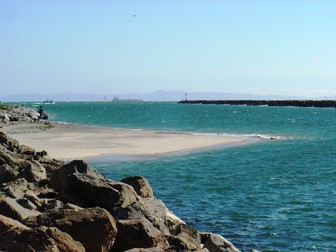Home
Focus Areas
About Us
"It was amazingin every single box core sample, we would see new species."
That's how Murdoch Rabone of London's Natural History Museum describes the Clarion-Clipperton Zone, a vast mineral-rich region twice the size of India that's been designated for future deep-sea mining.
To assess the potential risks and understand the biodiversity at stake, a team of biologists has created the first comprehensive checklist compiled by compiling species records from previous research expeditionsby compiling data from previous research expeditions.
In the journal Current Biology, they report that 5,578 different species have been identified in the CCZ, of which approximately 88% are completely new to science.
Rabone says it's important to understand and protect this "amazing biodiversity."
"We share this planet with all this amazing biodiversity, and we have a responsibility to understand it and protect it," he says.
"And it was amazingin every single box core sample, we would see new species."
The team used various deep-sea mining techniques to explore the CCZ, including remote-controlled vehicles and box-core sampling.
Rabone says some of the sponges look like "classic bath sponges, and some look like vases.
They're just beautiful."
They're
Selected Grant News Headlines
A customized collection of grant news from foundations and the federal government from around the Web.
Vivek Wadhwa is an academic, entrepreneur, and author.Why the world's best hope for health-care innovation is not America, but India.How India's health- care innovation beats America's.How does...more
Culture Works has raised and granted funds for numerous arts organizations in Dayton since 1974.Funding for their Grants for Arts Project (GAP) program has been terminated by the National Endowment...more
Chicago!, a concert with a salute to our great city featuring Chicago-based performers and composers.The program includes the world premiere of NLM-commissioned Smooth Pluck Whirl by Shawn Okpebholo,...more
Wadada Leo Smith's Big Ears Jazz Festival took place in Knoxville, Tennessee, last weekend.The festival is a live concert expression of the cross-genre, intergenerational aesthetic summed up by...more
Envision is an exciting evening of dance and filmmaking at the Coronado Performing Arts Center on Friday, May 16 and Saturday May 17 at 7pm.The evening of original dances offers a behind-the-scenes...more
HFA Alumni Honored at UMass Amherst's 2025 Commencement Ceremony : College of Humanities & Fine Arts.David Korins is best known for his theater work, including Tony Award-winning hits "Hamilton,"...more
Music Mondays is a partnership between Rady Children's Hospital and Switchfoot Bro-Am Foundation.The initiative aims to bring the healing power of music to patients through regular live...more
The Recording Academy's Black Music Collective has proudly announced the recipients of the fourth annual "Your Future Is Now" scholarship program.Five students attending Historically Black Colleges...more
Parsippany Student Earns National Recognition in PTA Arts Program.Erin Kirk, a Student at Parsippany High School, plans to pursue a career in Physical Therapy after graduating in June.The National...more
The Penguin Project's cast and team will take an audience to the faraway land of Agrabah in their production of Disney's "Aladdin KIDS" The goal with the Penguin Project production is to give people...more
Social Entrepreneurship
Spotlight
When it Comes to Social Enterprises, Failure is the Best Platform for Innovation

In the world of social enterprises, failure is a cringe-worthy moment nobody wants to talk about. But, social entrepreneurs can benefit from their failures.










